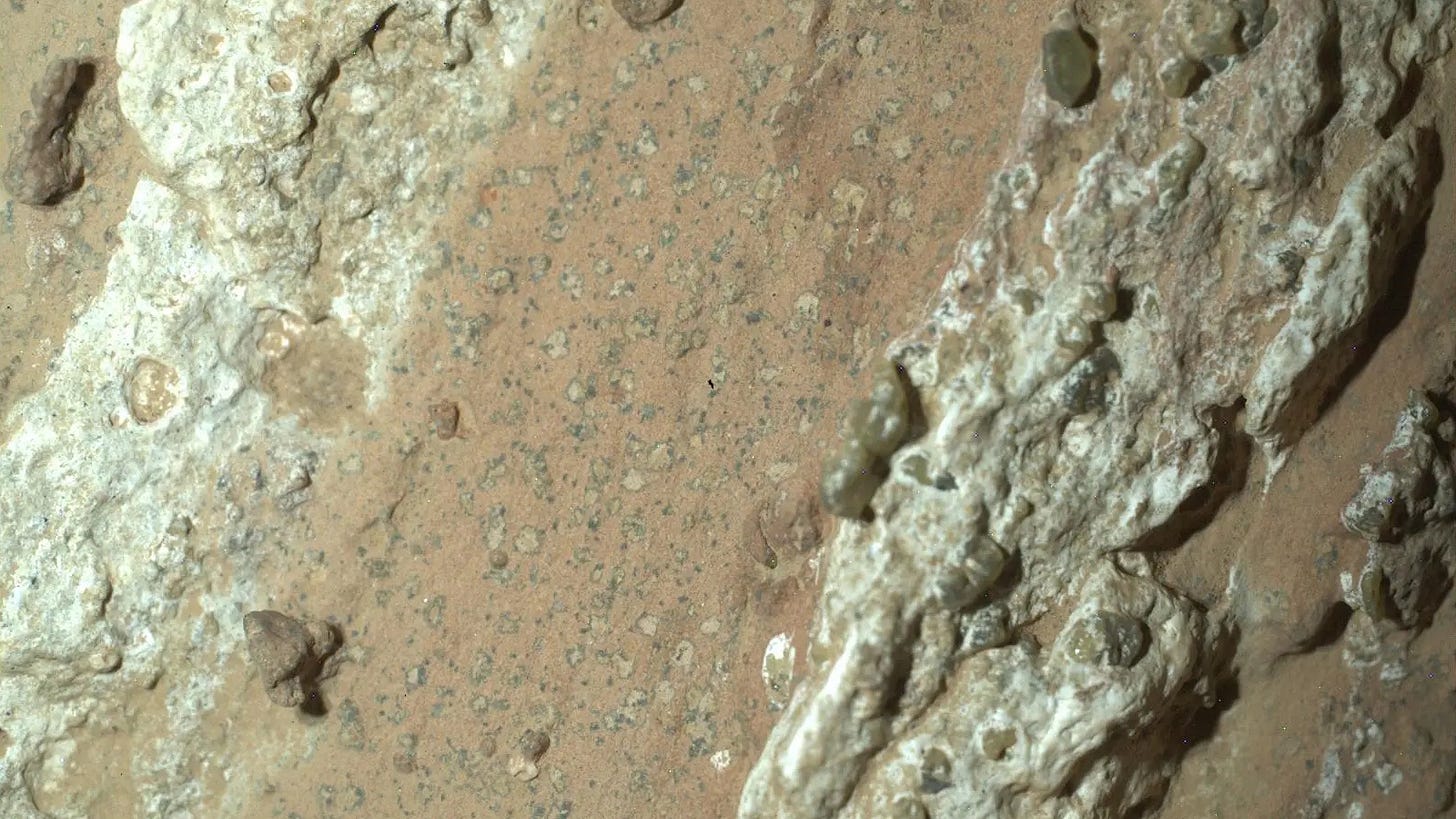Was There Life on Mars?
A rover on the Red Planet stumbles across an intriguing hint of a long gone world
A year ago, the Perseverance Rover discovered a rock on the surface of Mars. That happens a lot, of course, but this rock was special. For one thing, it lay amidst a region we think was once a riverbed and through which water slowly moved. The rock showed clear signs of this – it was streaked with a substance called calcium sulphate, a mineral often deposited by slow-moving river water.
Yet it also showed signs of something else. When Perseverance scanned the rock with its onboard instruments, it detected organic compounds and found the rock was marked with a pattern of spots containing iron and phosphate. Similar spots have been seen before on Earth, and, since they can be made by microbes living in layers of sediment, are often associated with life.
That raises an obvious question. Does this rock contain proof that Mars was once alive? It is tempting to think that it does – indeed, had these spots been found on our own planet, we probably wouldn’t have given the answer a second thought. But this being Mars, and perhaps being the first concrete evidence of life beyond Earth, we should proceed with caution.
The real question we should ask, then, isn’t whether this rock could have been marked by life – it surely could have been - but whether it could instead have been marked by something else. And here the answers are less clear.
The organic compounds Perseverance found, for example, are not necessarily from living creatures. They are merely molecules containing carbon alongside other atoms like hydrogen, nitrogen, or oxygen. These can come from many places, and indeed they might simply have fallen from space – comets are known to contain organic compounds, and dust from them has been falling as a long, slow rain on Mars for billions of years.
But the spots are harder to explain. There are ways they could have formed without biology, a recent study found, but all require temperatures higher than the rock could plausibly have been exposed to. Indeed, the study found that biology really is the most likely explanation for their origin – except, of course, that this is Mars we are talking about, and Martian biology – alien biology – is a very big deal.
The study therefore stops short of this dramatic conclusion. In its place, it labels this as a “potential biosignature”. It is a discovery consistent with the presence of life, and one for which an alternative explanation is hard to find. But to find out more, it concludes, we’ll need to get a closer look at this rock.
Mars, Four Billion Years Ago
At first glance, of course, Mars seems an unlikely place to find any kind of biology. Its terrain is cold, airless, and dry. There is precious little water on the surface, and that which does exist is locked away in polar ice caps or buried under the surface. Even worse, its soil is laced with perchlorates, a chemical toxic to most life as we know it.

